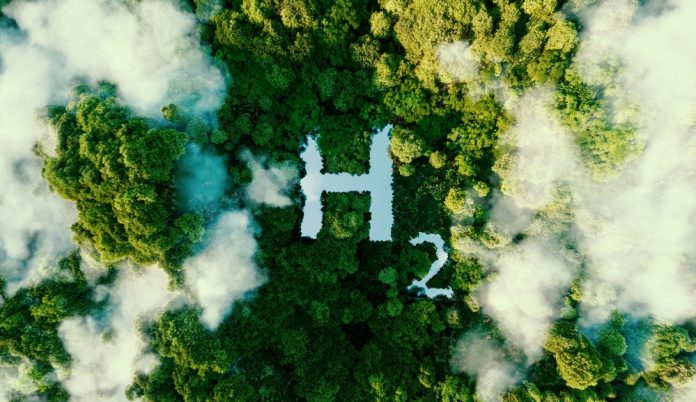GFZ researchers have identified where to discover natural hydrogen resources using state-of-the-art simulations of plate tectonic processes.
Hydrogen gas (H2) has great potential to replace current fossil fuels while simultaneously eliminating the associated emission of CO2 and other pollutants.
However, a major obstacle is that it requires mass production. Current synthetic hydrogen production is, at best, based on renewable energies, but it can also be polluting if fossil energy is used.
The solution may be found in nature since various geological processes can generate hydrogen. Until now, it has remained unclear where we should be looking for potentially large-scale natural hydrogen accumulations.
A team of researchers led by Dr Frank Zwaan, a scientist in the Geodynamic Modelling section at GFZ Helmholtz Centre for Geosciences, present an answer to this question.
Natural hydrogen hotspots in deep mantle rocks
Using plate tectonic modelling, the researchers found that mountain ranges in which originally deep mantle rocks are found near the surface represent potential natural hydrogen hotspots.
These mountain ranges may not only be ideal geological environments for large-scale natural H2 generation but also for forming large-scale H2 accumulations that can be drilled for hydrogen production.
Natural hydrogen can be generated in several ways, for instance, by bacterial transformation of organic material or splitting of water molecules driven by the decay of radioactive elements in the Earth’s continental crust.
The general viability of natural hydrogen as an energy source has already been proven in Mali, where limited volumes of H2 originating from iron-rich sedimentary layers are produced through boreholes in the subsurface.
However, the most promising mechanism for large-scale natural hydrogen generation is a geological process in which mantle rocks react with water. The minerals in the mantle rocks change their composition and form new minerals of the so-called serpentine group, as well as H2 gas.
In order for these rocks to come in contact with water and serpentinise, they must be tectonically exhumed towards the Earth’s surface.
Tectonic modelling allows for better hydrogen generation in rocks
Using a state-of-the-art numerical plate tectonic modelling approach, calibrated with data from natural examples, the team simulated the full plate tectonic evolution from initial rifting to continental break-up, followed by basin closure and mountain building.
In these simulations, the researchers were able to determine for the first time where, when, and how much mantle rocks are exhumed in the mountains and when these rocks may be in contact with water at favourable temperatures to allow for efficient serpentinisation and natural hydrogen generation.
It turns out that conditions for serpentinisation and, thus, natural H2 generation are considerably better in mountain ranges than in rift basins.
Due to the comparably colder environment in mountain ranges, larger volumes of exhumed mantle rocks are found at favourable serpentinisation temperatures of 200-350°C. At the same time, plenty of water circulation along large faults within the mountains can allow for their serpentinisation potential.
As a result, the annual hydrogen generation capacity in mountain ranges can be up to 20 times greater than in rift environments.
Intensifying natural hydrogen exploration
This research provides a strong impulse to intensify the exploration of natural H2 in mountain ranges.
Various exploration efforts are already underway in places such as the Pyrenees, European Alps, and Balkans, where researchers have previously found indications of ongoing natural hydrogen generation.
Dr Zwaan explained: “Crucial to the success of these efforts will be the development of novel concepts and exploration strategies.
“Of particular importance is how the formation of economic natural H2 accumulations is controlled by the tectonic history of a given exploration site.”
He concluded: “We will need to determine the timing of the key geological processes involved because if H2 reservoirs are to form during mountain building, there must have been rifting beforehand.
“Overall, insights gained from plate tectonic simulations such as those performed in this study will be of great value.”









